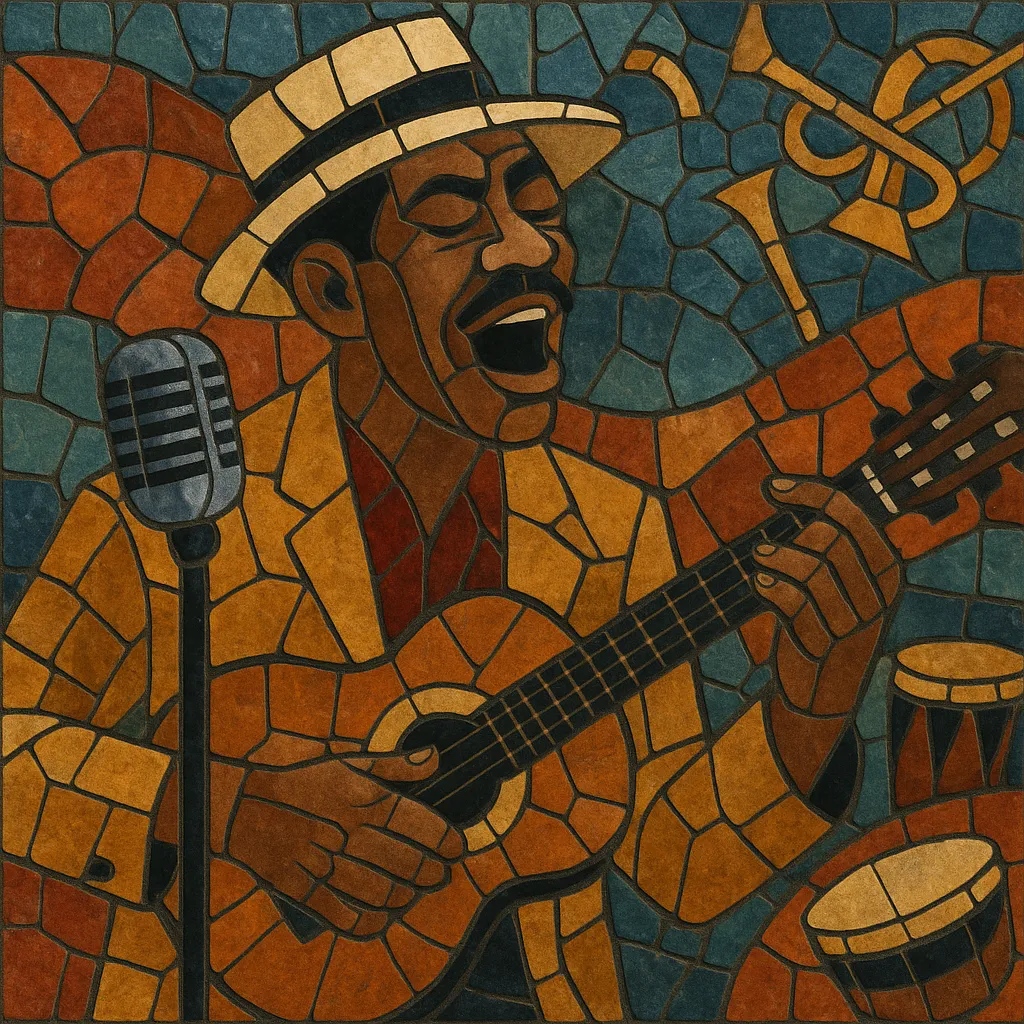
Samba de breque is a comic, narrative-driven substyle of Rio de Janeiro samba marked by sudden stop-time breaks (the breque, or “brake”) in which the singer inserts spoken asides, jokes, and rapid-fire commentary before the band kicks back in.
Built on the classic samba groove but punctuated by dramatic silences and hits, it spotlights the malandro persona (a streetwise trickster) and witty storytelling. Its arrangements typically feature cavaquinho, 7-string guitar, pandeiro, surdo, and brass or reeds, while the vocalist toggles between sung lines and theatrical speech for humorous, punchline-like effect.
Samba de breque emerged in Rio de Janeiro during the early radio era, when urban samba was crystallizing on records and on-air variety shows. Its defining trick—the breque—interrupts the groove so the singer can deliver spoken asides, satire, and narrative twists. The device drew on samba’s syncopation and on the stop-time and comic flair heard in choro- and maxixe-informed popular music, as well as the revue/carnival stage tradition.
By the late 1930s and 1940s, the style had a clear identity through recordings by Moreira da Silva (often cited as the style’s greatest exponent), who perfected the malandro character with tongue-in-cheek stories about bohemians, gamblers, and rogues. Radio-friendly sambistas such as Jorge Veiga and, later, Germano Mathias helped popularize the punchy stop-start delivery and crowd-pleasing humor, while composers tied to the carnival and choro worlds supplied clever narratives tailor-made for the breque.
The spirit of samba de breque persisted through mid-century samba and into television-era variety programs, where fast-talking patter, comic timing, and streetwise themes remained crowd favorites. Although never the dominant samba branch, its vocal delivery and storytelling prefigure aspects of Brazilian spoken-word songcraft and humor in music. Modern listeners often recognize in samba de breque an early template for talk-forward, beat-conscious vocal styles that value timing, punchlines, and character acting.
Beyond its musical mechanics, samba de breque is a window into Rio’s urban folklore—its slang, hustle, and carnival wit—aligning music, theater, and narrative in a uniquely Brazilian fashion.

